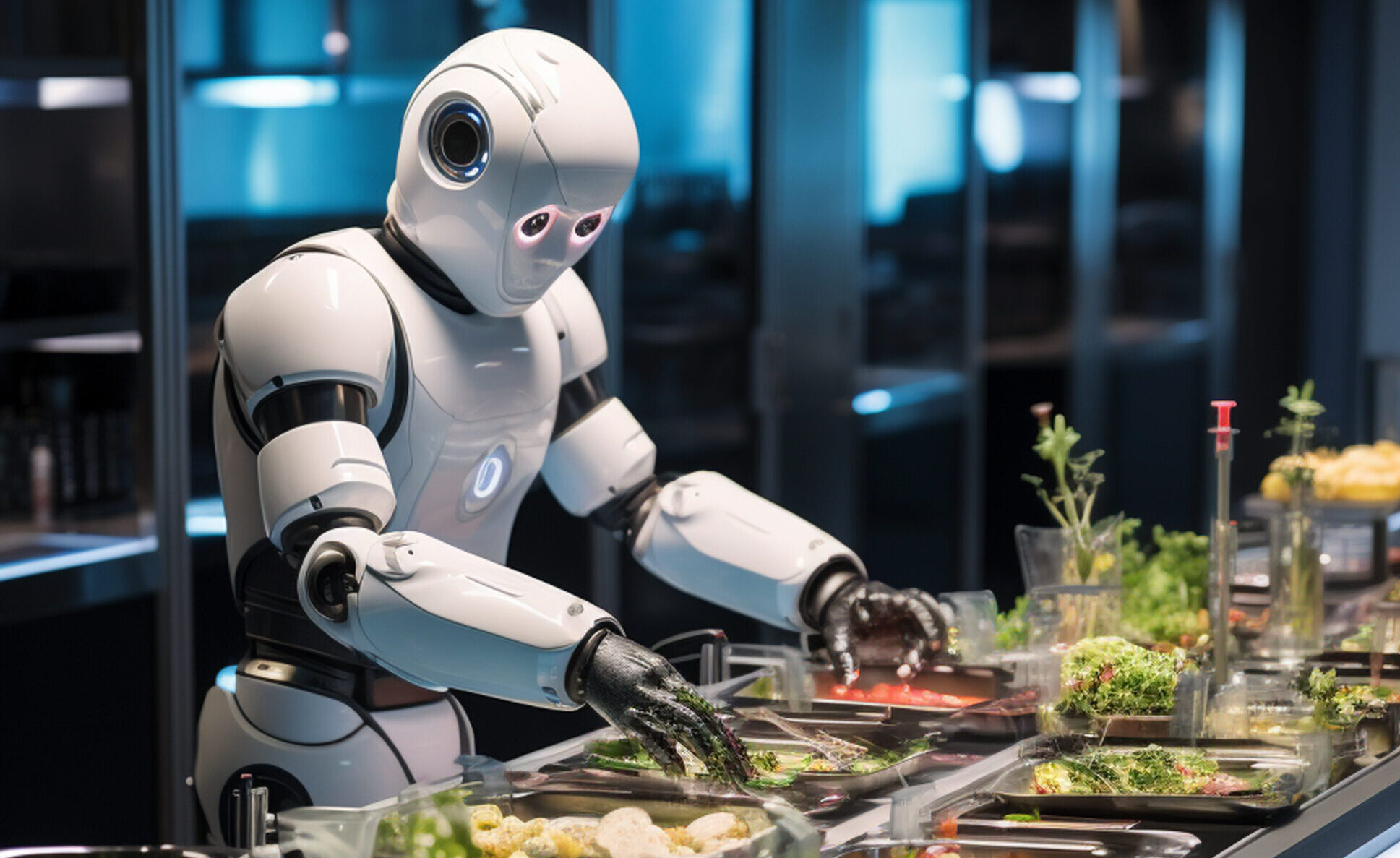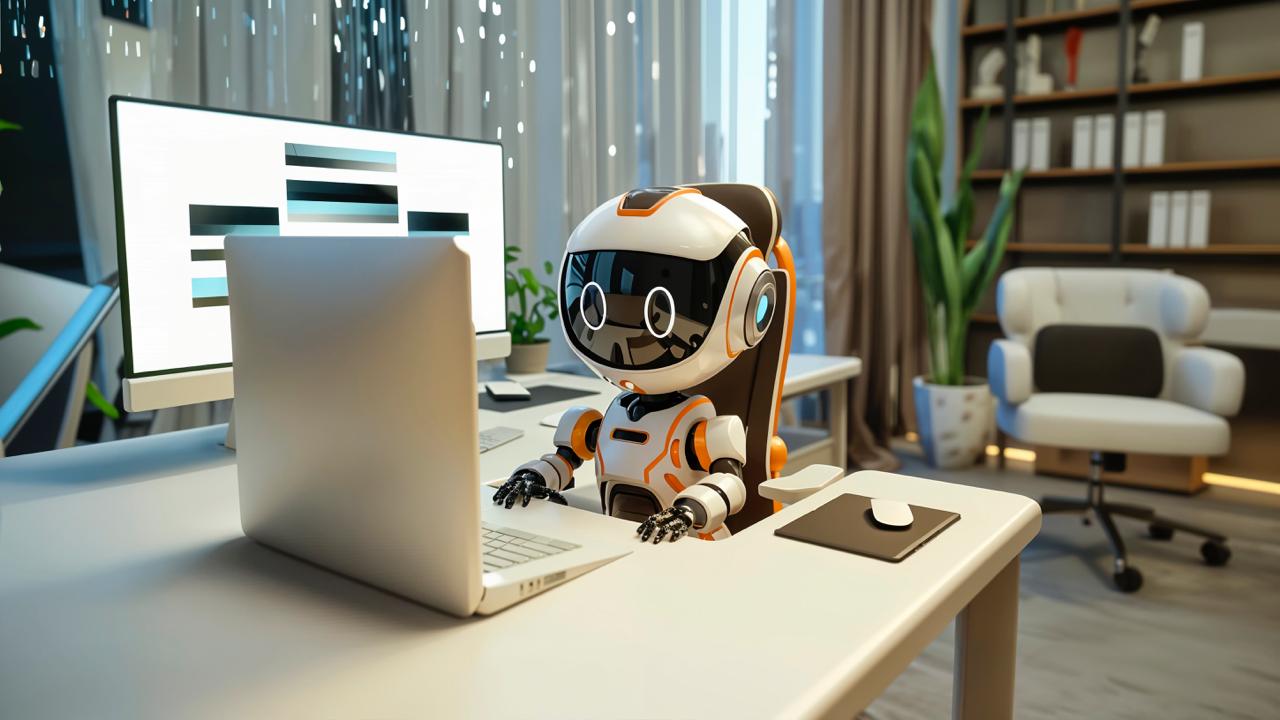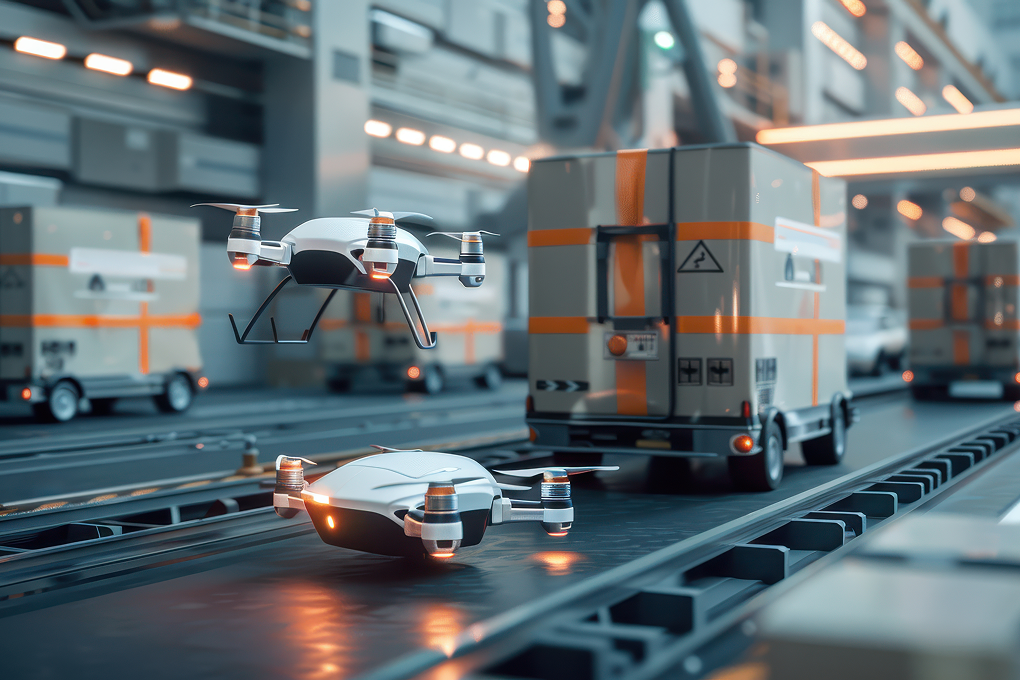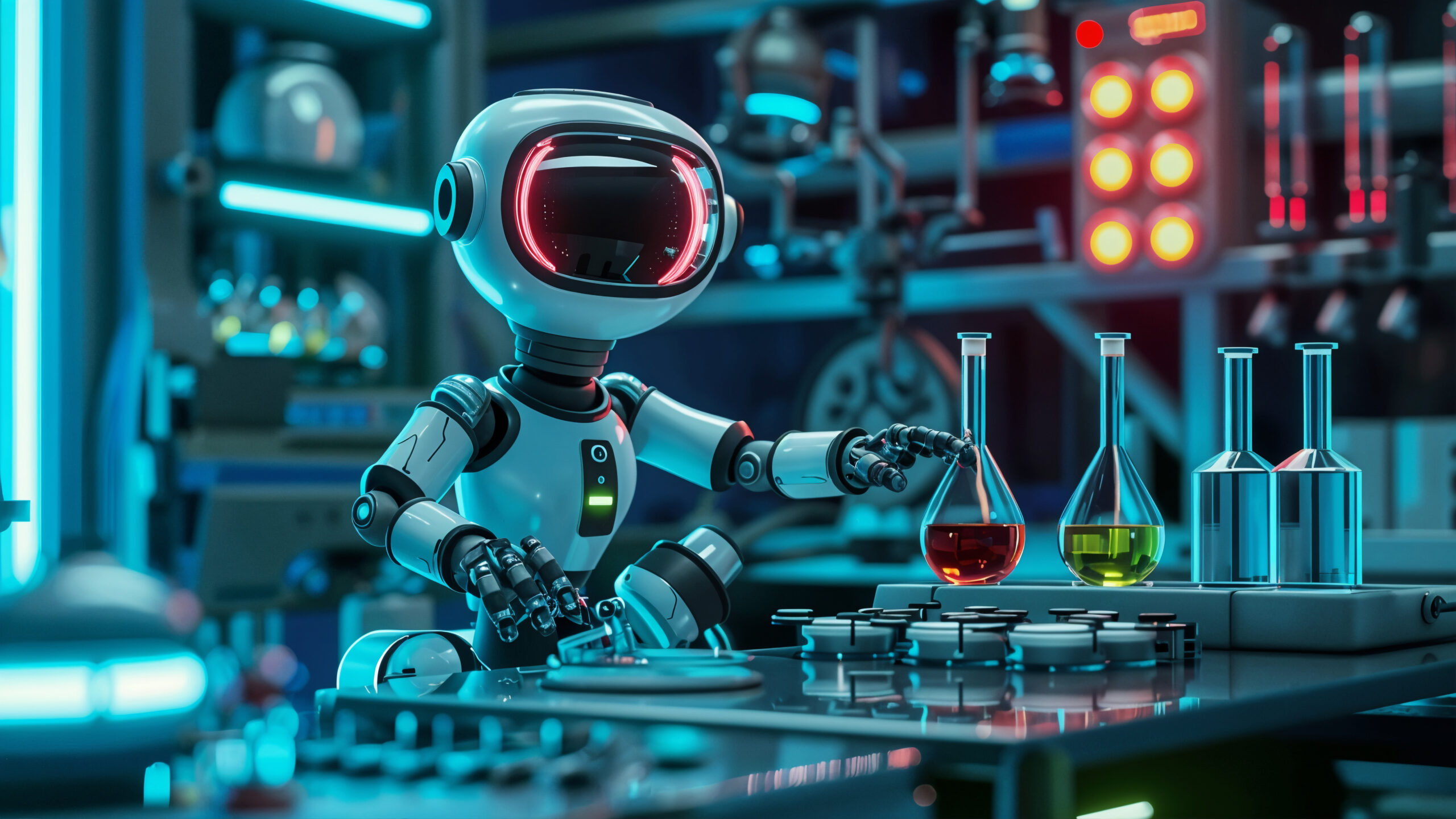Something weird is happening with food right now. AI in the food industry is fixing problems most people don’t know exist. Food AI systems predict demand so grocery stores never run out of fresh produce. AI food scanners catch quality issues faster than humans, while AI food tracking monitors everything from soil to your plate.
AI and food integration spans AI in food manufacturing plants adjusting recipes in real-time to AI food apps suggesting meals from your fridge contents. AI food waste management prevents tons of good food hitting landfills. AI food ordering platforms know your preferences better than you do.
The real story isn’t robots replacing chefs – it’s AI food technology quietly solving humanity’s biggest food challenges.
AI in Food Production: A New Frontier in Efficiency and Sustainability
Farmers noticed something strange three years ago. Old farming methods stopped working. Weather got unpredictable. Pests showed up at weird times.
One Iowa corn farmer lost 40% of his crop last spring. A fungal disease hit without warning. His neighbor used AI food technology and got warned two weeks early. He saved most of his harvest. News like this travels fast in farming towns.
Small sensors now sit scattered across farm fields. They look like white drink coasters. Nothing fancy. But they measure soil conditions constantly. They detect plant stress before leaves change color. AI in food production takes all this data and predicts problems weeks ahead.
Food processing plants face different troubles. Remember the lettuce recall two years back? Companies took eight days to find the contaminated farms. People got sick. Businesses lost millions. AI food scanners changed this completely. They track everything in real-time. Contamination gets traced within hours now.
Recipe adjustments caught everyone off guard. AI in food manufacturing stopped using standard formulas. Wheat protein levels vary by region. Tomato sugar content changes with rainfall. Smart systems adjust automatically. Cooking times shift. Temperatures change. Mixing gets modified. Same taste every time despite ingredient differences.
AI food waste management fixes an embarrassing problem. Good food rots in warehouses. Food banks stay empty. The technology predicts spoilage timing accurately. Some places cut waste by 30%. Better donation timing helps. Price reductions happen automatically.
Environmental benefits shocked industry experts. Precision farming uses 25% fewer chemicals. Crop yields actually improved. Water usage dropped through targeted irrigation. AI food tracking makes this possible across entire supply chains.
Feeding more people with less environmental damage seemed impossible before. Not anymore. It’s happening right now across thousands of farms and processing facilities.
Industry Overview
Food production is old. Really old. Farming started around 5000 BC. People grew crops. They raised animals. Trade routes connected different regions.
Technology changed everything slowly. The 1800s brought machines to farms. Chemical fertilizers helped crops grow better. The 1900s introduced refrigeration. Food could travel farther without spoiling.
Computers arrived in the early 2000s. Barcodes tracked products. Supply chains got organized. Then AI in the food industry showed up.
AI food technology solves big problems. Food waste costs billions every year. Hotels now cut waste by 30% using smart systems. Computers predict how much food people will order. Less gets thrown away.
Food safety scares everyone. Bad lettuce shuts down restaurants. AI food scanners catch problems early. They spot contamination before people get sick. Quality stays consistent across huge production runs.
Workers are hard to find. Farms need people during harvest season. Processing plants run 24/7. Robots now handle repetitive jobs. AI in food manufacturing sorts products faster than humans. Staff can focus on important decisions.
Supply chains break down constantly. Trucks get delayed. Products spoil in warehouses. AI food tracking fixes these problems. Smart routing saves time and money. Companies report 22% better efficiency.
Environmental issues matter more now. Water gets scarce in farming regions. Chemicals pollute soil and rivers. Precision farming cuts water use by 40-60%. AI and food partnerships reduce chemical inputs. Crop yields stay high anyway.
Growing populations need more food. Climate change disrupts weather patterns. Old farming methods don’t work anymore. AI food waste management addresses all these challenges at once.
The numbers tell the story. Agricultural AI market hits $4.7 billion by 2028. That’s serious money flowing into food technology. Change happens fast when profits and survival align.
AI and Automation
People freak out about robots taking their jobs. Makes total sense. Walk through any modern factory and half the workers are gone already. Machines do the assembly work now.
AI and food technology sounds like the next wave of job losses. But here’s what actually happens on farms and in processing plants.
Automation tackles the stuff nobody wants to do anyway. Lifting 50-pound flour sacks all day destroys your back. Standing in freezing meat processing plants for 10-hour shifts sucks. Loading trucks in 100-degree heat isn’t fun either.
AI food technology works differently though. It doesn’t replace workers – it makes them smarter. A farm manager can ask the system weird questions. Like why do tomatoes grow better in the south field every third year? The AI crunches weather data, soil reports, pest cycles going back decades. Finds patterns humans would never spot.
AI in food manufacturing changes what people do instead of cutting jobs. Quality control used to mean checking random samples and hoping for the best. Now workers oversee AI food scanners that examine every single product. Same people, different role.
AI food tracking actually creates jobs that didn’t exist before. Supply chain analysts use AI insights to reroute trucks around traffic jams. Inventory managers predict when restaurants will run out of ingredients weeks ahead of time.
The combination works pretty well. Machines handle heavy lifting. AI processes massive amounts of data. Workers focus on decisions that actually matter. Most people prefer this setup once they get used to it.
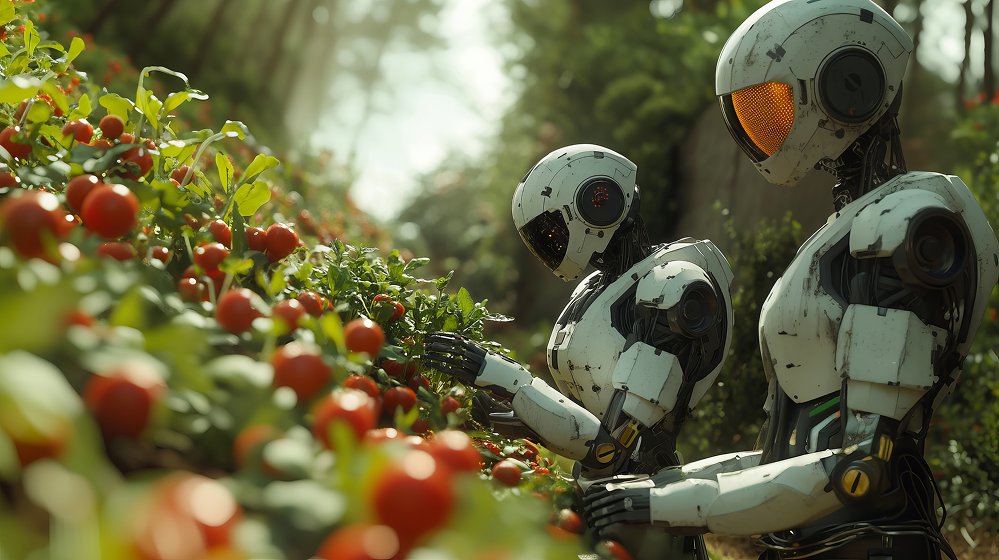
Overview of AI in the Food Industry
AI in the food industry pops up everywhere now. From farms to grocery stores. The technology fixes problems that drove people crazy for years. Here’s what’s happening in different areas.
Food Production
Farmers used to play guessing games. Will it rain next week? Are bugs about to attack the corn? Old-timers relied on gut feelings and weather folklore. That stopped working when climate patterns went haywire.
AI food technology actually predicts this stuff weeks ahead. Tiny sensors sit in fields measuring soil nutrients all day. They catch pest problems before you see any damage. Plant diseases get spotted through stress signals invisible to human eyes.
Processing plants got smarter too. AI food scanners find allergens and contaminants automatically. Delivery trucks take better routes thanks to AI routing. Warehouses don’t run out of ingredients anymore because inventory systems predict demand.
Supply Chain Administration
Food travels crazy distances before hitting your plate. Tracking used to mean paperwork and phone calls. When contamination happened, nobody knew where it started until weeks later.
AI food tracking follows products from farm to store shelf. Inventory counts stay accurate for once. Food safety testing happens at every step now. Hygiene rules get enforced through cameras that never blink.
Optimize Yield for Farmers
Smart farming beats the old ways consistently. Drones fly over fields taking pictures. Satellites beam down weather data and soil reports. Ground sensors measure everything – temperature, humidity, nutrients.
AI and food partnerships save farmers serious money. No more expensive field trials that might fail. Inspections happen automatically. Precision agriculture cuts waste while crops actually grow better.
Food Retail
Grocery stores used to throw away mountains of produce. Nobody could predict what customers would buy. AI food waste management nails demand forecasting now. Stores know exactly how many bananas to order for Tuesday afternoon.
Trends get spotted before they explode. Remember when everyone suddenly wanted oat milk? AI systems catch these shifts early.
Enhance Food Safety & Quality
Food safety violations flew under the radar for years. Someone would get sick, then investigators would spend weeks tracing the source. AI in food manufacturing watches everything in real-time.
Smart cameras catch workers who forget hairnets or skip handwashing. Production lines get monitored constantly. Contamination problems get flagged within hours instead of weeks. The whole supply chain became way more transparent. Everyone knows exactly what’s happening at every step.
Benefits of AI in the Food Industry’s Supply Chain and Logistics
Waste Reduction
Food waste drives everyone absolutely crazy. Walk behind any grocery store and you’ll see dumpsters full of perfectly good produce. Nearly one-third of all food gets tossed every year while people go hungry down the street. The waste costs $940 billion annually. That’s more than some countries’ entire economies.
Here’s what really bothers people – around 10% of greenhouse gas emissions come from food that nobody ever eats. Farmers grow it. Trucks haul it. Stores refrigerate it. Then it goes straight to landfills.
AI food waste management started changing this about three years ago. Smart systems track exactly when bananas will get too ripe. They automatically drop prices before spoilage hits. Some stores donate produce to food banks based on AI timing predictions. One major chain cut waste by 40% just through better coordination.
Produce and Store the Right Product Mix
Grocery managers used to make wild guesses about customer demand. Stock 200 watermelons in January? They sit there rotting. Run out of ice cream during a heat wave? Customers storm out mad.
AI in the food industry crunches buying patterns, weather forecasts, local events, even social media trends. The technology spotted the cauliflower rice craze weeks before it exploded. Stores that followed AI recommendations stayed stocked while competitors scrambled.
Seasonal planning got much easier too. AI knows exactly how many turkeys to order for Thanksgiving. It predicts summer produce demand based on temperature forecasts. Halloween candy, Christmas cookies, Easter chocolate – everything gets forecasted months ahead.
Improve Efficiency and Reduce Operational Costs
Equipment failures used to blindside food companies. A freezer dies overnight and ruins $50,000 worth of frozen goods. Production lines break down during peak demand. Nobody saw these disasters coming.
AI food technology predicts maintenance needs weeks before failures happen. Vibration sensors detect bearing problems. Temperature monitors catch cooling system issues. Companies fix things during planned downtime instead of emergency shutdowns.
Delivery route optimization saves ridiculous amounts of money. Trucks used to follow the same paths regardless of traffic jams or road construction. AI routing cuts fuel costs by 25% just through smarter planning. Drivers finish routes faster and customers get fresher food.
Improve Inventory Management and Logistics
Manual inventory counting was a nightmare. Workers would spend entire weekends counting boxes in freezing warehouses. Numbers were always wrong. Restaurants ran out of ingredients during busy Friday nights. Warehouses overflowed with stuff nobody ordered.
AI food tracking eliminated most of these headaches. RFID tags and smart sensors monitor everything automatically. The system knows exactly how many cases of tomatoes arrived this morning. It predicts when the restaurant downtown will need more flour based on their typical pizza orders.
Seasonal spikes don’t catch anyone off guard anymore. Super Bowl snack demand, summer barbecue supplies, back-to-school lunch items – AI forecasts all of it accurately.
Accurate Demand & Price Forecasts
Pricing decisions used to rely on gut feelings and competitor watching. Set avocado prices too high and customers buy elsewhere. Price them too low and profits vanish. Nobody knew the sweet spot.
AI and food analytics changed the game completely. The technology processes weather reports, crop yield data, competitor pricing, economic indicators, even social media buzz about specific foods. Some produce distributors increased profits by 30% through AI-powered pricing.
Dynamic pricing works especially well for perishable items. Day-old bread gets automatic discounts. Seafood prices adjust based on freshness. Customers get deals on good food that might otherwise spoil.
Reduced Emissions & Promotes Sustainability
Transportation emissions from food distribution are massive. Empty trucks driving back to warehouses. Planes carrying half-full cargo across continents. Refrigerated warehouses running inefficient cooling systems 24/7.
AI food technology optimizes routes for minimum environmental impact. Load planning ensures trucks carry maximum capacity. Energy management systems reduce power consumption during off-peak hours. One major distributor cut carbon emissions by 35% through smart logistics alone.
Cold chain efficiency improved dramatically too. AI predicts exactly how much refrigeration each shipment needs. Temperature controls adjust automatically during transport. Less energy gets wasted keeping food fresh.
Make Supply Chains Resilient
Natural disasters used to destroy food distribution for weeks. Hurricane Sandy shut down East Coast ports for days. Nobody had backup plans. Grocery shelves emptied while perfectly good food sat stranded elsewhere.
AI in food supply chain management spots problems way ahead of time. Weather analysis predicts crop failures months early. Port congestion gets forecasted based on shipping schedules. The system identifies alternative suppliers automatically when primary sources fail.
Recovery happens much faster now. When Hurricane Ian hit Florida, AI systems rerouted citrus shipments through other ports within hours. Stores stayed stocked while competitors struggled with empty shelves. Companies report 25% better resilience during major disruptions.
The technology creates detailed backup plans for everything. Multiple supplier options. Flexible distribution routes. Emergency inventory protocols scattered across different regions. When disasters strike, food keeps flowing to people who need it.
How AI Supports Roles Across the Food Industry
For Farmers
Most farmers still wake up at 5 AM worried about the same things their grandfathers did. Will it rain this week? Are bugs eating the corn? Is the soil getting depleted?
AI food technology changed the guessing game completely. Tiny sensors scattered across fields measure soil moisture every hour. Farmers get text alerts when specific sections need water. No more walking miles of farmland checking by hand.
Pest detection got really weird but effective. Drones equipped with cameras fly over crops taking thousands of photos. The AI spots aphid infestations before leaves start curling. One Iowa corn farmer prevented a total crop loss this way last summer.
Weather predictions used to be jokes among farming communities. Now AI and food production systems forecast microclimates down to individual fields. Harvest timing became precise instead of hopeful.
For Food Safety
Food safety inspectors used to spot-check random samples and pray nothing slipped through. One contaminated batch of spinach could shut down operations nationwide.
AI food scanners now examine every single item coming off production lines. The technology catches things human eyes miss completely. Color variations that indicate spoilage. Foreign objects smaller than rice grains. Chemical residue levels that exceed safe limits.
AI in food manufacturing watches worker behavior too. Cameras detect when someone skips handwashing or forgets protective gear. Sounds creepy but prevents disasters that used to blindside companies.
For Restaurants
Restaurant owners live in constant fear of running out of ingredients during busy periods. Nothing kills customer satisfaction faster than “Sorry, we’re out of that.”
AI food tracking predicts demand based on bizarre factors most people never consider. Weather forecasts affect pizza orders. Local sports games drive beer sales. Even social media trends influence what people order.
Menu engineering became scientific instead of guesswork. AI analyzes which dishes get ordered together. Suggests modifications that increase profits. Warns when ingredient costs spike before managers notice.
Kitchen coordination improved dramatically. Systems predict prep times for complex dishes. Staff know exactly when to start cooking based on order volume and table turnover rates.
For Food Delivery Services
Delivery drivers used to drive around aimlessly hoping for orders. Gas money disappeared while sitting in empty parking lots.
AI food technology tells drivers exactly where to position themselves. The system predicts order density by neighborhood, time, and weather. Rainy days spike soup deliveries. Friday nights mean pizza runs. College areas order late-night snacks.
Route optimization saves drivers serious money on gas. AI calculates the fastest paths considering traffic patterns, construction zones, even pedestrian crossing times. Some drivers report 30% fewer miles driven for the same earnings.
For Consumers
People get overwhelmed by food choices constantly. Grocery stores stock 40,000 different items. Restaurant menus list hundreds of options. Nobody knows what’s actually healthy anymore.
AI food apps cut through the confusion. Photo recognition identifies ingredients just by pointing your phone at a dish. Nutritional analysis happens instantly. The technology suggests meal modifications for specific dietary goals.
Shopping became less stressful too. AI-powered meal planning considers your schedule, cooking skills, and budget. It generates grocery lists that prevent food waste. Some families report saving $200 monthly through smarter shopping recommendations.
Recipe discovery got personalized beyond basic preferences. The AI learns you hate cilantro but love spicy food. It suggests dishes based on what’s already in your fridge. Cooking becomes more adventurous when the guesswork disappears.
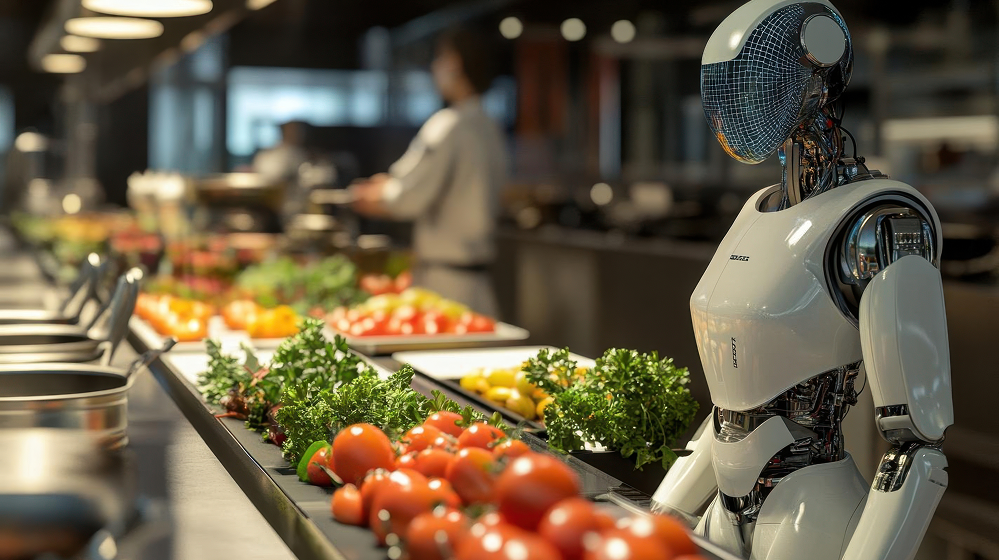
Applications of AI in Food Production
Food Recognition
My neighbor’s kid figured out how to scan his school lunch with his phone to avoid vegetables. Turns out AI food technology got so good at identifying food that apps can spot broccoli hiding under cheese sauce.
Restaurants started using this tech in sneaky ways. One local diner installed cameras that watch every plate leaving the kitchen. They discovered servers were giving away free desserts to friends. Another place found out their “large” fries portions varied by 40% depending on which teenager was working the fryer.
Food Delivery Optimization
Pizza delivery was the worst job ever until recently. Drivers spent half their shift lost in suburban neighborhoods. Orders arrived cold. Customers complained constantly.
AI food tracking changed everything about three years ago. Apps now know where orders will come from before people decide what to eat. College kids always order Chinese food around 11 PM on weekends. Office workers want salads during January health kicks.
The prediction stuff gets really specific. Rainy weather doubles soup orders. Football games spike wing deliveries. Even local events matter – graduation parties mean cake orders surge two weeks ahead.
Smart Kitchen Management
Ever watch a busy restaurant kitchen during dinner rush? Pure chaos. Timers blaring. Cooks shouting across the room. Orders backing up when someone burns the salmon.
AI in food manufacturing tries to bring some sanity to this madness. Systems track every dish from order to plate. They know it takes exactly 8 minutes to properly cook that medium-rare steak, so they start it at the perfect time.
One pizza place discovered their biggest bottleneck wasn’t the oven – it was cheese grating. The AI system now tells workers exactly when to prep toppings for incoming orders.
Food Waste Reduction
Walk behind any restaurant and the dumpsters tell a depressing story. Mountains of perfectly good food get tossed while homeless shelters beg for donations.
AI food waste management finally started addressing this problem. Smart systems learned that football Sundays sell different amounts of wings depending on which teams are playing. Rainy Tuesdays kill salad sales but boost soup orders.
One bakery used to throw away dozens of bagels daily. Now their AI predicts exactly how many everything bagels to make based on weather, local events, and historical patterns. Waste dropped 60% in six months.
Allergen and Ingredient Detection
Allergen mistakes literally kill people. One mom told me about her kid’s severe nut allergy – even trace amounts send him to the emergency room.
AI food scanners catch contamination that human testing would miss. A cookie manufacturer discovered their “nut-free” products contained microscopic almond particles from shared equipment. Traditional lab tests take days. The AI flagged it in minutes.
Food Safety Monitoring
Health inspectors used to be like lightning – you never knew when they’d strike. Most violations went undetected until someone posted angry Yelp reviews about food poisoning.
AI in food manufacturing watches everything constantly now. Cameras make sure workers actually wash their hands instead of just running water. Temperature sensors catch when walk-in coolers start failing before food spoils.
One restaurant manager said the system caught three potential disasters last month – a broken freezer, improper food storage, and a worker who kept forgetting hairnets.
Personalized Nutrition and Diet Planning
Generic diet plans fail spectacularly because everyone’s different. The same meal plan that works for a marathon runner will destroy a desk worker’s metabolism.
AI food apps learn your actual eating patterns instead of what you claim to eat. They know you always crave chocolate around 3 PM. They suggest protein snacks that prevent sugar crashes instead of lecturing about willpower.
Smart Vending Machines
Vending machines got surprisingly intelligent lately. AI food technology enables dynamic pricing that would make airlines jealous. Snickers bars cost more during afternoon energy crashes. Items near expiration get automatic markdowns.
Product placement happens automatically too. Best-selling items move to eye level. Healthy options get positioned where guilty snack buyers might reconsider. Some machines boost sales 35% through better psychology.
Flavor and Product Development
Creating new flavors used to be like throwing spaghetti at the wall. Food scientists mixed random ingredients hoping something tasted good. Most attempts failed miserably.
AI and food development partnerships analyze successful flavor combinations from thousands of recipes. They predict which weird combinations might actually work. Chocolate and bacon? The AI suggested that pairing years before it became trendy.
Predictive Maintenance
Equipment failures used to destroy entire production days. A broken dough mixer shuts down the whole bakery. Refrigeration systems failing overnight ruin thousands of dollars in inventory.
Sensors now detect problems weeks before catastrophic failures. Vibration analysis catches bearing issues. Temperature fluctuations reveal cooling system stress. Maintenance happens during slow periods instead of panic situations.
Beverage Production
Craft breweries obsess over consistency. Small temperature variations during fermentation ruin entire batches. Traditional monitoring meant checking manually every few hours and hoping nothing went wrong overnight.
AI food manufacturing systems watch fermentation continuously. pH levels, temperature, carbonation – everything gets tracked automatically. One brewery prevented seven bad batches last year through early problem detection.
Ordering Systems
Drive-through ordering got weird but way more efficient. AI systems remember your usual order and suggest modifications based on weather. Hot days mean iced coffee recommendations. Cold snaps trigger hot chocolate upsells.
Voice recognition finally understands regional accents and speech quirks. No more repeating your order three times because the teenager can’t understand “large fries.”
Advanced Quality Control
Quality control used to mean checking random samples and crossing your fingers. AI food scanners examine every single product now.
Computer vision spots defects human eyes would miss completely. One potato chip factory catches metal fragments smaller than pencil tips. Another facility detected bacteria contamination through slight color variations invisible to human inspectors.
Robotics in Food Service
Burger-flipping robots showed up in kitchens about two years ago. They cook patties with perfect timing and consistent results. No more hockey pucks during busy periods when stressed cooks forget about orders.
Cleaning robots work overnight shifts sanitizing everything. Food prep robots slice vegetables with exact measurements. Some places report 40% labor cost reduction while food quality actually improved.
The technology keeps evolving rapidly. New applications pop up monthly as AI gets smarter and food industry problems find creative solutions through automation and intelligent systems.
Challenges and Considerations of AI in Food Industry
AI in the food industry sounds like a miracle solution until reality hits. Small restaurant owners get excited about smart technology then see the price tags. One pizza shop owner told me he wanted AI inventory tracking but couldn’t justify spending $40,000 when his monthly profit barely covers rent.
Data privacy gives everyone nightmares. AI food tracking systems know everything – what customers order, when they order it, even their dietary restrictions. Last year hackers hit a major delivery company and leaked personal eating habits of thousands of customers. Embarrassing food choices became public information.
Workers hate this stuff more than anyone admits. Kitchen staff see AI food technology as a direct threat to their jobs. One diner manager said employees kept “accidentally” unplugging smart sensors. Older cooks refuse to learn new systems and just quit instead.
AI food scanners screw up in ways that surprise everyone. Lighting changes confuse computer vision. Unusual packaging throws off recognition systems. A meat processor recalled $2 million worth of perfectly good beef because AI mistook normal marbling for contamination.
Legal responsibility gets messy fast. When AI in food manufacturing systems approve bad products, who gets sued? Food safety laws were written decades before artificial intelligence existed. Lawyers are making fortunes sorting out liability issues.
Technology fails at the worst possible moments. AI food waste management systems crashed at three grocery chains during Thanksgiving week. Nobody had backup plans. Store managers panicked trying to manage inventory manually during their busiest period.
Rural farms face basic connectivity problems. AI and food applications need solid internet connections. Many operations exist in areas where broadband barely works. Cloud-based systems become expensive paperweights without reliable connections.
Traditional food cultures resist AI completely. Artisan cheesemakers worry algorithms will destroy recipes passed down through generations. Craft brewers fear standardization will eliminate the creativity that defines their products.
Success means finding balance between technological promise and messy human reality.
Throughput AI’s Value-Added Proposition for AI in Food Industry Supply Chain
Predict Near-term Demand
Most AI food technology systems focus on long-term forecasting but miss the immediate challenges. Throughput tackles what actually keeps food managers awake at night – next week’s demand spikes.
Perishable products create constant stress. Strawberries spoil within days. Fresh bread goes stale overnight. AI food tracking through Throughput predicts demand changes that happen fast. Summer heat waves spike ice cream sales within hours. Unexpected rain doubles soup orders at lunch spots.
Traditional forecasting misses these rapid shifts. Throughput’s AI food waste management catches seasonality changes, weather impacts, and local events that affect buying patterns immediately. Food producers can adjust orders before getting stuck with spoiled inventory.
Work With Small Data Quantities
Big AI in the food industry platforms demand massive datasets that small businesses don’t have. Local bakeries and family restaurants operate with limited historical data. Most AI systems fail when data sets stay small.
Throughput works effectively with whatever information exists. A small grocery store with six months of sales data can still get meaningful predictions. AI and food analytics don’t require years of perfect records to produce useful insights.
User-Centric Features
Complex AI dashboards intimidate managers who just want simple answers. Throughput focuses on user-friendly interfaces that make sense to non-technical staff.
Restaurant owners don’t need PhD-level analytics. They need clear recommendations about tomorrow’s ingredient orders. AI in food manufacturing should simplify decisions, not complicate them with confusing charts and technical jargon.
Flexible, Customizable and Scalable
Most AI platforms force businesses into rigid structures. Throughput adapts to existing workflows instead of demanding complete operational changes.
Small operations can start with basic demand forecasting. Success breeds confidence to expand into inventory optimization and supply chain management. AI food technology grows with the business rather than overwhelming it from day one.
AI-driven Innovation – Companies
Nestlé

Nestlé went nuts with AI food technology after their CEO visited Silicon Valley in 2019 and came back obsessed with machine learning. Now their R&D labs look more like tech startups than traditional food companies.
The coffee project started because customers kept complaining about inconsistent taste. Instead of hiring more taste testers, they fed 50,000 different bean combinations into computers. Customers now get personalized coffee recommendations that actually taste good. My neighbor swears by her custom blend that supposedly matches her “bold but smooth” preference.
Their chocolate factories caught problems that quality control missed for decades. Turns out human inspectors only spotted 60% of defects. Workers were embarrassed when AI systems started flagging wrapper inconsistencies and texture variations they’d been approving for years.
Vivi Kola

This small Brazilian soda company was getting crushed by Coca-Cola until they partnered with local universities on AI flavor development. Couldn’t afford traditional R&D so they got creative.
AI and food partnerships helped them launch regional flavors that became instant hits. Their guarana-açaí combo exploded in São Paulo after AI predicted the flavor combination would work there. Sales jumped 35% while Coca-Cola scrambled to figure out what happened.
Climax Foods Inc.

The founder got tired of terrible vegan cheese at his local grocery store and decided to solve the problem through data science instead of traditional food development. His AI food technology analyzes dairy products at the molecular level.
Early attempts were disasters. The AI suggested combinations that tasted like chalk. But after months of feeding back taste test results, the system learned to create plant-based cheese that actually melts and stretches like the real thing. Dairy farmers at a recent trade show admitted they couldn’t tell the difference.
McDonald’s

Drive-through ordering was pure chaos before AI arrived. Workers couldn’t understand thick accents. Customers got frustrated repeating orders. Lines backed up during lunch rushes.
AI food tracking systems launched quietly in test markets around 2020. Results shocked executives – order accuracy jumped 90% while drive-through times dropped significantly. The technology handles weird modifications that used to confuse teenage workers.
Kiosks got smarter about upselling too. They stopped suggesting ice cream during snowstorms and started promoting hot coffee on cold mornings. Simple changes that boosted sales without annoying customers.
Pizza Hut

Their delivery drivers used to get lost constantly. Orders arrived cold after wrong turns and traffic delays. Customer complaints were brutal on social media.
AI in food manufacturing transformed logistics completely. The system predicts order patterns and positions drivers strategically before dinner rushes hit. One Chicago location cut delivery times by 40% just through better driver positioning.
Their mobile app learned individual preferences over time. Regular customers now get suggestions that actually match their weird pizza combinations. The AI figured out some people always order Hawaiian on Fridays but prefer meat lovers on Sundays.
KFC
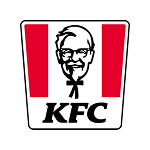
Mass marketing campaigns used to waste money on irrelevant promotions. Most customers ignored generic coupons completely.
AI food technology enabled targeted marketing that actually works. Office workers get lunch deals during weekdays. Families receive dinner promotions on weekends. The system learned that certain customers respond to spicy chicken offers while others prefer original recipe deals.
Response rates doubled when promotions matched actual eating patterns instead of demographic assumptions.
Starbucks

Store managers complained about customer flow problems for years. Corporate finally used AI and food service analysis to figure out why some locations felt cramped while others seemed empty.
One Manhattan store discovered their pastry case was creating unnecessary bottlenecks. Moving it three feet eliminated wait times during morning rushes. Seems obvious in hindsight but nobody noticed until computers analyzed traffic patterns.
Inventory management became eerily accurate. Baristas stopped running out of popular drinks during unexpected busy periods. The AI learned that rainy days increase hot chocolate sales while sunny afternoons spike frappuccino demand.
Domino’s
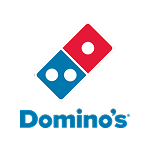
Voice ordering through smart speakers seemed like a publicity stunt until customers started using it regularly. AI food tracking handles complex orders that would confuse human phone operators.
The technology understands regional speech patterns and processes modifications correctly. “Large pizza, pepperoni, no cheese, light sauce” gets interpreted accurately without multiple clarifications. Phone wait times disappeared while order accuracy improved.
Waitrose

This upscale UK grocery chain got tired of running out of popular items during unexpected demand spikes. AI in food manufacturing now predicts shortages weeks before they happen.
Weather analysis helps stock appropriate seasonal items. Heat wave predictions trigger automatic orders for barbecue supplies and cold beverages. Store managers stopped scrambling to restock during sudden temperature changes.
Produce quality monitoring catches items before they spoil on shelves. Automatic discounting reduces waste while giving customers deals on perfectly good food approaching expiration dates.
Ethical and Social Implications of AI in the Food Industry
Privacy and Data Security
Your phone knows more about your eating habits than your doctor does. AI food technology tracks everything – late-night ice cream orders, stress eating patterns, even when you’re trying to diet but keep ordering pizza.
Last year a major delivery app got hacked. Suddenly everyone could see their neighbors’ embarrassing food orders. One guy’s wife discovered his secret McDonald’s runs through leaked data. Another person’s gluten-free orders revealed a medical condition they hadn’t shared with family yet.
Grocery loyalty programs are especially creepy. AI food tracking systems know you’re pregnant before you tell anyone – pregnancy test purchases plus prenatal vitamin buying patterns give it away. They predict health problems based on medication-related food choices. Insurance companies would love this information.
Impact on Employment
Walk into any McDonald’s lately and half the workers are gone. Self-service kiosks replaced most cashiers. Now AI food technology threatens kitchen staff too. Burger-flipping robots already work in some locations.
One restaurant manager told me his veteran cook quit after 20 years when AI systems started monitoring cooking times and suggesting “improvements.” The guy felt insulted that a computer questioned his experience.
But weird new jobs emerged too. Someone has to train AI systems on local food preferences. Equipment maintenance became more technical. Data analysis roles popped up everywhere. Problem is, the 55-year-old fry cook can’t easily become an AI trainer.
Fairness and Bias in AI Algorithms
AI and food systems make assumptions that can get really problematic. Delivery algorithms might avoid certain neighborhoods based on biased training data. Credit scoring for food orders could discriminate against people with unusual names or addresses.
One food app kept recommending Chinese restaurants to anyone with an Asian-sounding name. Another suggested “budget-friendly” options to customers from lower-income zip codes. The AI meant well but reinforced stereotypes nobody wanted.
AI food apps trained mostly on data from wealthy urban areas don’t understand rural food cultures or diverse dietary traditions. Recommendations become irrelevant or offensive to entire communities.
Trust and Consumer Acceptance
My 70-year-old neighbor refuses to use self-checkout machines at grocery stores. She wants human interaction, not computer screens. Many older customers feel the same about AI food technology in restaurants.
Cultural resistance runs deep too. Traditional Italian grandmothers don’t want algorithms suggesting modifications to family recipes passed down for generations. Craft brewers worry AI will standardize their creative processes.
Trust breaks down when AI makes obviously wrong recommendations. One app suggested pork dishes to a Jewish customer repeatedly. Another recommended dairy to someone with severe lactose intolerance despite profile settings.
Building acceptance requires acknowledging that AI in the food industry should enhance human expertise, not replace cultural knowledge and personal relationships that make food meaningful.
The technology works best when it solves practical problems without threatening the human connections that make eating social and culturally significant. Success means finding balance between efficiency gains and preserving what people value about food experiences.
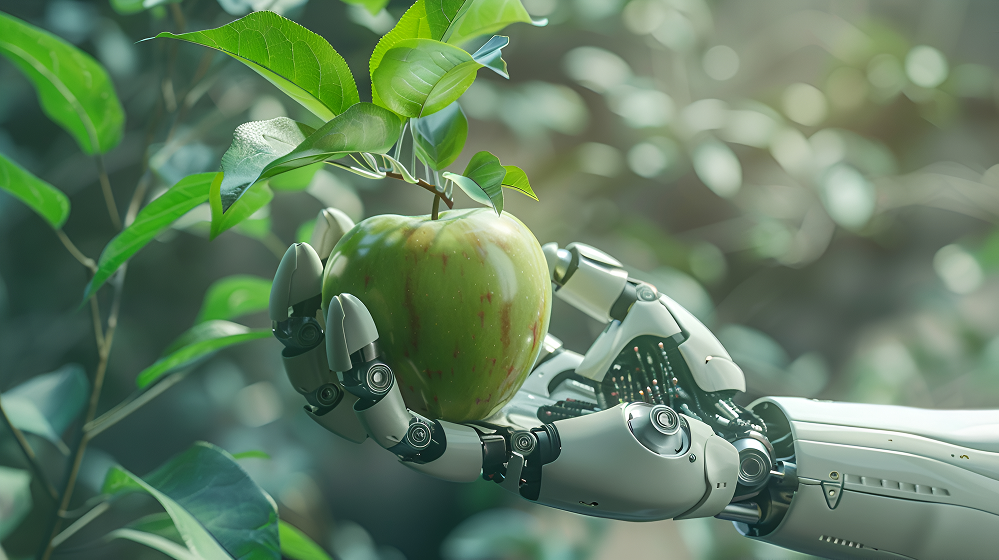
Future Trends and Predictions of AI in the Food Industry
Personalized Nutrition at Scale
AI food technology will create nutrition plans based on your actual genetic makeup and health data. Smart fridges are already being tested that track what you eat and suggest meals based on your fitness tracker readings.
One startup is working on systems that predict when you’ll get sick based on your eating patterns. The AI notices you always crave sugar before catching colds and suggests immune-boosting foods instead. Early results show people avoiding illness more often through better nutrition timing.
Molecular Food Engineering
Scientists are using AI and food development to build ingredients from scratch at the molecular level. Think plant-based bacon that tastes identical to pork because the AI designed the protein structure to fool your taste buds completely.
This gets interesting for people with food allergies. AI systems can engineer dairy-free cheese that melts and stretches exactly like regular cheese. No more disappointing vegan alternatives that taste like cardboard.
Autonomous Agricultural Systems
Farms will run themselves within the next decade. AI in food manufacturing will control everything from planting to harvesting without human workers. Robots are already being tested that can identify ripe tomatoes and pick them without damaging the plant.
Urban vertical farms will grow fresh vegetables inside city buildings year-round. Your lettuce might come from a 20-story farm downtown instead of traveling hundreds of miles from rural areas.
Predictive Food Safety Systems
AI food tracking will catch contamination before anyone gets sick. Instead of random testing that sometimes misses problems, sensors will monitor growing conditions, transport temperatures, and storage humidity constantly.
Food recalls will become rare because problems get detected early. Scan any apple with your phone and see exactly which orchard it came from, what pesticides were used, and how fresh it really is.
Climate-Adaptive Crop Development
Weather patterns keep changing and farmers struggle to adapt. AI food technology will help develop crops that can handle droughts, floods, and temperature swings that would destroy traditional varieties.
Precision agriculture already uses AI to optimize water usage and fertilizer application. Some farms report 30% higher yields while using fewer resources through smarter growing techniques.
Enhanced Culinary Experiences
Cooking apps will become like having a professional chef in your kitchen. Point your camera at ingredients and the AI suggests recipes based on your skill level and available time. AI food apps will provide real-time feedback while you cook.
Virtual cooking classes will adapt to how you learn best. Some people need visual demonstrations while others prefer step-by-step text instructions. The AI figures out your learning style and adjusts accordingly.
Democratized Food Innovation
Small restaurants will access AI tools that only major corporations could afford before. Your local pizza shop might have better demand forecasting than chain restaurants had five years ago.
AI in the food industry will become affordable enough that every food business can optimize operations, reduce waste, and improve quality through intelligent systems.
Integrated Supply Chain Intelligence
Food distribution will become incredibly efficient through real-time coordination. AI food tracking systems will automatically reroute trucks around traffic jams or weather delays to keep products fresh.
Dynamic pricing will prevent waste by automatically discounting items that need to sell quickly. Grocery stores will rarely throw away good food because the AI optimizes pricing and donation timing perfectly.
The biggest changes will happen behind the scenes. AI food technology will work invisibly to make food safer, more sustainable, and better suited to individual needs. Most people won’t notice the technology working, but they’ll benefit from fresher ingredients, fewer food safety issues, and meals that match their health goals better.
Success depends on keeping the human elements that make food culturally important while using AI to solve practical problems around nutrition, waste, and food security.
How to integrate AI in the food industry
Jumping into AI in the food industry without a plan usually ends badly. Companies waste money on flashy technology that doesn’t solve real problems. Smart integration starts with identifying specific pain points rather than trying to automate everything at once.
First, figure out where AI can actually help. Maybe your restaurant struggles with ingredient waste because orders vary unpredictably. Or your processing plant needs better quality control to catch defects faster. AI food technology works best when it addresses concrete operational challenges.
Data collection comes next. AI and food systems need good information to work properly. Install sensors that track temperature, inventory levels, or customer ordering patterns. Many businesses discover their data is messier than expected. Clean, organized information makes the difference between AI success and expensive failure.
Start small with pilot projects. Test AI food tracking in one location before rolling it out company-wide. Learn what works and what doesn’t. Adjust systems based on real-world feedback from staff who use them daily.
Employee training matters more than most companies realize. Workers need to understand how AI tools function and why they help rather than threaten job security. AI in food manufacturing succeeds when human employees feel supported by technology rather than replaced by it.
Measure results carefully. Track specific metrics like waste reduction, quality improvements, or customer satisfaction scores. AI integration should produce measurable benefits within months, not years.
FAQs About AI & Food Industry
AI food technology crunches massive amounts of data to suggest flavor combinations that actually work. Instead of food scientists randomly mixing ingredients for months, AI analyzes molecular structures and predicts which plant proteins will taste like real chicken. One company used AI to develop dairy-free cheese that melts properly – something that stumped traditional R&D for years.
Traditional food development is basically educated guesswork. Scientists make hundreds of prototypes hoping something tastes good. AI and food innovation tests thousands of combinations virtually first. A new ice cream flavor that used to take 18 months to develop now happens in 6 weeks. Success rates jumped dramatically because AI eliminates obvious failures before expensive testing.
Nestlé uses AI to create personalized coffee blends based on individual taste preferences. PepsiCo developed new chip flavors through machine learning analysis of regional taste patterns. NotCo built an AI platform called Giuseppe that designs plant-based alternatives. Their mayo took 10 months to develop, but their chicken alternative took only 2 months as the AI got smarter.
AI in food manufacturing handles the boring computational stuff while humans do the creative work. Food scientists still taste-test everything and make final decisions. AI just eliminates thousands of bad combinations before human testing begins. Teams report being more creative because they spend less time on tedious data analysis.
Consumer surveys, ingredient databases, nutritional profiles, social media food trends, purchasing patterns, and molecular composition data. AI food tracking systems also analyze cost information, supply chain availability, and regulatory requirements. The more diverse the data, the better the predictions.
AI food apps spot emerging trends by analyzing millions of social media posts, search queries, and purchase patterns. They predicted the oat milk explosion months before it hit mainstream. Systems can identify which flavors will become popular in specific regions based on cultural preferences and demographic shifts.
Personalized nutrition based on your DNA, food designed at the molecular level for specific health conditions, fully automated farms and kitchens, and predictive systems that prevent food safety issues before they happen.
Voice recognition handles drive-through orders that used to confuse teenage workers. Predictive systems tell managers exactly how many burgers to prep before lunch rush hits. Automated fryers cook fries with perfect timing. Apps suggest menu items based on weather and your previous orders.
Conclusion
The food world changed faster than anyone expected. AI in the food industry went from sci-fi concept to everyday reality in just a few years. Farmers now prevent crop disasters weeks ahead of time. Restaurants know exactly what customers want before they order. Food safety problems get caught before anyone gets sick.
AI food technology solves problems that used to seem impossible. Plant-based burgers that actually taste like meat? AI designed the proteins. Zero food waste in grocery stores? Smart systems predict demand perfectly. Personalized nutrition based on your DNA? Already happening in test markets.
The results speak for themselves. Companies report 30-40% waste reduction, faster product development, and happier customers. AI and food partnerships are making agriculture more sustainable while helping small businesses compete with industry giants.
But this isn’t about replacing human expertise. The best applications enhance what people do well – creativity, cultural knowledge, personal connections. AI food tracking handles data processing so chefs can focus on cooking and farmers can concentrate on growing better crops.
AI in food manufacturing represents the biggest shift in how we produce food since the industrial revolution. The technology works best when it solves real problems that people actually face every day.
Need help figuring out how AI food technology can work for your business? We’ve helped dozens of food companies implement smart solutions that actually deliver results. Let’s talk about your specific challenges and find practical ways AI can help.
